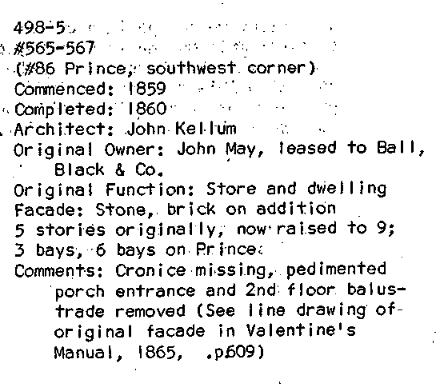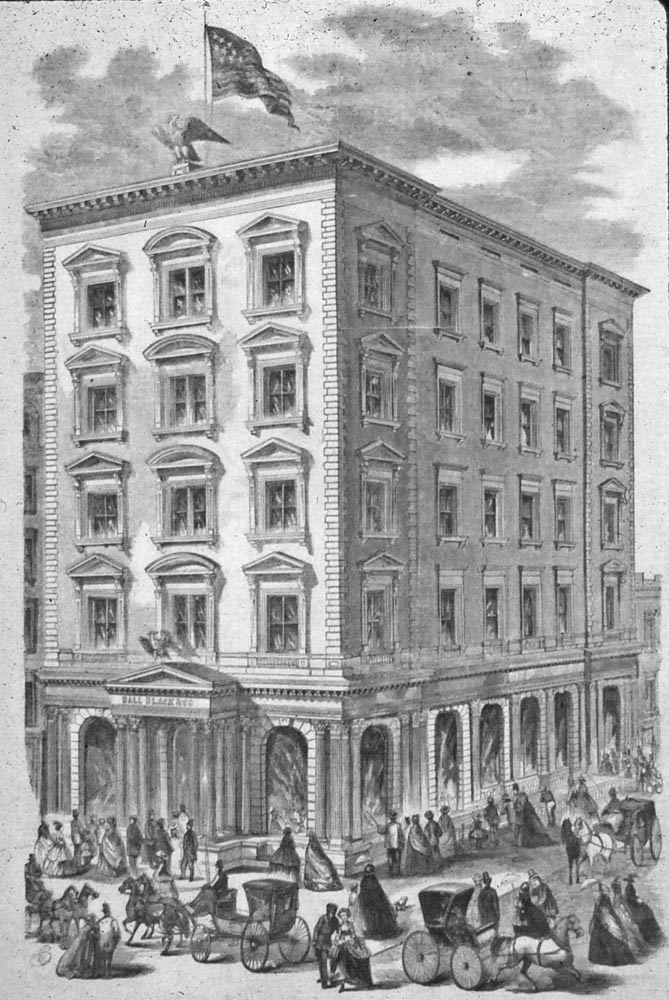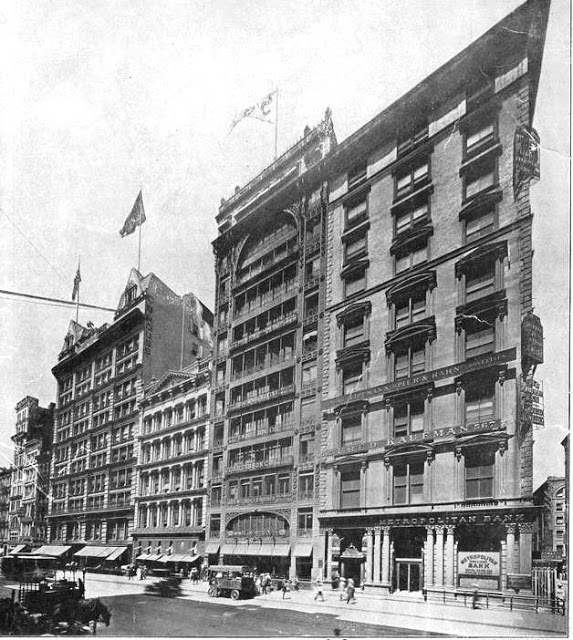When one looks at the façade of any of the older buildings here along SoHo Broadway, it is easy to see that there is history in the structure. Scratch below the ornate surfaces, and the story tends to get more interesting. At the corner of Broadway and Prince Street stands 565 Broadway, a building with one of these unexpected histories.

Built in 1860, this 120-year-old stone and brick building was designed by architect John Kellum in a classical Palazzo style. As stated in the SoHo Cast Iron Historic District Designation report, the building was initially 5 stories but has since been raised to 9, which is visible when looking up as the former roof now appears as a register separating the original structure from the addition. The building was initially built as a store and manufacturing center and was initially leased to Ball, Black, & Co., the top 19th century jeweler before Tiffany. The first three floors of the building were used as a showroom and sales for jewelry and other decorative goods produced by the company, while the remainder of the structure was set aside for manufacturing their products. Unfortunately, the company was out of business by 1874.

By 1890, the building became home to the Banner Brothers wholesale clothing merchants, who specialized in “medium and better grades” of men’s clothing. A successful enterprise, the company was eventually brought before a United States Congressional committee that was looking into the “sweating system,” the precursor to the practice of sweatshop labor. Within a year the Banner Brothers would be out of 565 Broadway. In 1893, Charles and Moritz Freedman purchased the building; manufacturers of women’s wear, these owners also were the ones who enlarged the building by four extra stories in a lighter brick with window pediments and corner quoins that mirror the original structure.
Throughout the early 20th century, 565 Broadway was home to a variety of retailers and manufacturers of garments, jewelry, and other industries reflective of SoHo at the time. By the middle of the century, 565 Broadway, like much of SoHo, was mostly abandoned and unused given the exit of industry and manufacturing from the area. The ’70s and ’80s would see the building take on new life as its once-commercial loft spaces were converted to live-work units by SoHo’s artist residents.

In more recent history, 565 Broadway has become recognizable for a cultural milestone of Generation X: as the location of the apartment from the first season of MTV’s The Real World.
From February through May in 1992, 7 strangers of disparate and diverse backgrounds lived in a converted 4000-square-foot duplex in the now residential co-op building in the district. The Real World: New York, though receiving mixed critical reviews at the time of its airing, became a hit and ended up pioneering some of the conventions that have come to define the reality TV genre (ex.: bringing together a group of participants who had not previously met, and the use of “confessional” interviews with participants to double as the show’s narration). Below you can check out the first 10 minutes of the series, and even recognize 565 Broadway in a few of the shots:
Most recently, the building was the location of the Victoria’s Secret brand PINK in the first-floor retail space. Though its future is unknown, 565 has seen its fair share of changed hands, uses, scandals, and cultural touchstones so it is exciting to think about what might come to this building next.